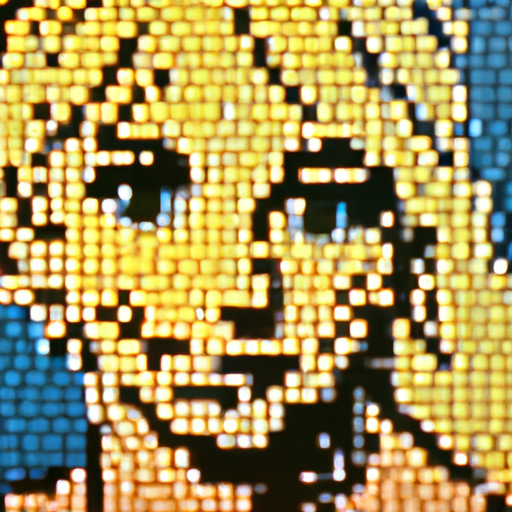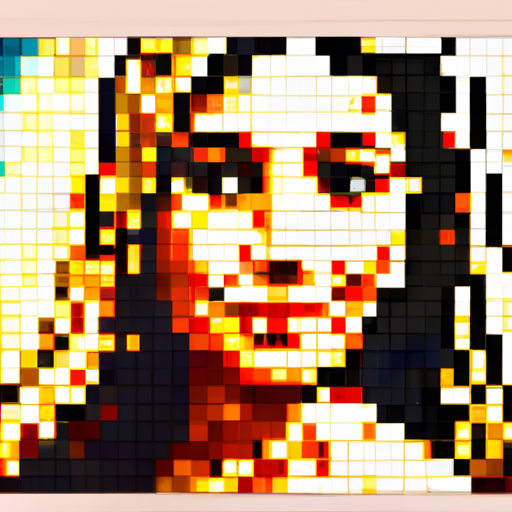
-
Table of Contents
Pixel Mosaic: Ancient Art Inspiration in Design

Pixel mosaics have become increasingly popular in the world of design, captivating audiences with their intricate patterns and vibrant colors. This unique art form draws inspiration from ancient mosaic techniques, combining them with modern technology to create visually stunning and meaningful designs. In this article, we will explore the history of pixel mosaics, their significance in design, and how they continue to inspire artists and designers today.
The Origins of Mosaic Art
Mosaic art dates back thousands of years, with its origins traced to ancient Mesopotamia and Egypt. The technique involves creating images or patterns by arranging small, colored pieces of glass, stone, or other materials, known as tesserae, into a larger composition. Mosaics were used to decorate floors, walls, and ceilings of temples, palaces, and public spaces, serving both decorative and narrative purposes.
Ancient Roman mosaics are particularly renowned for their intricate designs and meticulous craftsmanship. These mosaics often depicted scenes from mythology, daily life, and important historical events. The use of tesserae allowed artists to create detailed and vibrant compositions that stood the test of time.
The Rise of Pixel Mosaics
Pixel mosaics, also known as digital mosaics or pixel art, emerged in the late 20th century with the advent of computer graphics and pixel-based displays. The concept of pixel art involves creating images using small, square-shaped pixels as building blocks. Each pixel represents a single point of color, and when combined, they form a larger image.
Pixel art gained popularity in the world of video games, where limited graphical capabilities required designers to work within strict pixel constraints. However, it soon transcended the gaming industry and found its way into various forms of digital art and design.
The Intersection of Ancient Art and Modern Design
Pixel mosaics draw inspiration from the ancient art of mosaic-making, combining it with modern technology and design principles. By using pixels as their building blocks, artists and designers can create intricate patterns and images reminiscent of traditional mosaics.
One of the key advantages of pixel mosaics is their scalability. Unlike traditional mosaics, which require physical materials and meticulous craftsmanship, pixel mosaics can be easily created and resized using digital tools. This flexibility allows designers to apply pixel mosaics to a wide range of mediums, including digital illustrations, animations, textiles, and even architectural installations.
Case Study: The Pixel Mosaic Revival
In recent years, pixel mosaics have experienced a revival in various design disciplines. One notable example is the work of artist and designer Invader, who gained international recognition for his pixelated mosaic installations in cities around the world.
Invader’s work draws inspiration from classic video games, using pixel mosaics to create characters and scenes reminiscent of early arcade games. His installations, often placed in unexpected urban locations, add a touch of nostalgia and playfulness to the urban landscape.
Another example of the pixel mosaic revival can be seen in the field of textile design. Designers are incorporating pixelated patterns into fabrics, creating unique and visually striking textiles. These fabrics can be used in fashion, interior design, and even industrial applications, adding a modern twist to traditional weaving techniques.
The Significance of Pixel Mosaics in Design
Pixel mosaics hold several significant implications for the world of design:
- Preservation of Ancient Techniques: By incorporating elements of ancient mosaic-making into modern design, pixel mosaics help preserve and celebrate traditional craftsmanship.
- Accessibility and Scalability: The digital nature of pixel mosaics makes them accessible to a wide range of designers and artists. They can be easily created, modified, and reproduced, allowing for greater experimentation and exploration.
- Visual Impact: Pixel mosaics have a unique visual appeal, combining the nostalgia of retro video games with the intricacy of traditional mosaics. They can evoke emotions, tell stories, and create a sense of wonder.
- Integration of Technology: Pixel mosaics seamlessly integrate ancient art techniques with modern technology, showcasing the possibilities of combining traditional craftsmanship with digital tools.
Conclusion
Pixel mosaics offer a fascinating blend of ancient art inspiration and modern design. By drawing from the techniques of ancient mosaic-making and combining them with digital tools, pixel mosaics create visually stunning and meaningful designs. They not only preserve and celebrate traditional craftsmanship but also showcase the possibilities of integrating ancient art with modern technology. As pixel mosaics continue to inspire artists and designers, we can expect to see their influence in various design disciplines, adding a touch of nostalgia and creativity to the world of visual arts.
